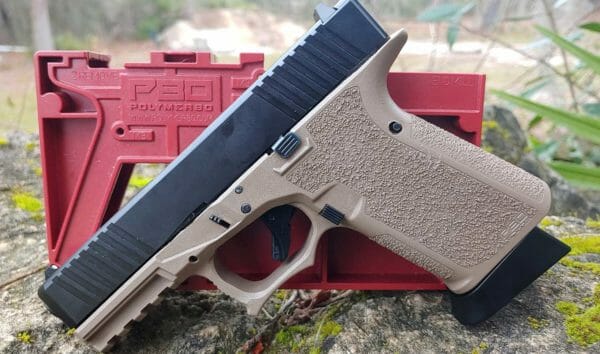
U.S.A. — On July 24th, 2023, a three-judge panel of the United States Court of Appeals for the Fifth Circuit refused the government’s attempt to stay the district court’s decision in the case of VanDerStok v. Garland, which vacated the ATF’s “frame or receiver” rule. The preliminary injunction against enforcement of the frame and receiver portions of the Final Rule was issued by Judge O’Conner on August 17, 2022. The Memorandum Opinion by Judge Reed O’Conner, published on June 30, 2023, vacated (ruled them to be unlawful) the ATF’s Final Rule.
Judge O’Conner, told the ATF (the Biden Administration) it did not have the authorization from Congress to change the definition of a frame or receiver to include partially finished frames or receivers. The ATF did not have the authority to alter the definition of a firearm to include a weapons parts kit.
The ATF appealed to the Fifth Circuit three-judge panel. The three-judge panel refused to grant an emergency stay on the issues.
From the unpublished order on July 24, 2023:
Because the ATF has not demonstrated a strong likelihood of success on the merits, nor irreparable harm in the absence of a stay, we DENY the government’s request to stay the vacatur of the two challenged portions of the Rule. “[V]acatur . . . reestablish[es] the status quo ante,” Defense Distributed v. Platkin, 55 F.4th 486, 491 (5th Cir. 2022), which is the world before the Rule became effective. This effectively maintains, pending appeal, the status quo that existed for 54 years from 1968 to 2022.
The ATF is likely correct, however, that the vacatur was overbroad. The district court analyzed the legality of only two of the numerous provisions of the Rule, which contains an explicit severability clause. See 87 Fed.Reg. at 24730. Where a court holds specific portions of a rule unlawful, severance is preferred when doing so “will not impair the function of the [rule] as a whole, and there is no indication that the regulation would not have been passed but for its inclusion.” K Mart Corp. v. Cartier, Inc., 486 U.S. 281, 294 (1988); see also Sw. Elec. Power Co. v. EPA, 920 F.3d 999, 1033 (5th Cir. 2019)(vacating only challenged portions of a rule). Because the agency has shown a strong likelihood of success on its assertion that the vacatur of the several non-challenged parts of the Rule was overbroad, we STAY the vacatur, pending appeal, as to the non-challenged provisions….
We sua sponte EXPEDITE the appeal to the next available oral argument calendar. To allow time for additional proceedings as appropriate, this order is administratively STAYED for 10 days.
The two specific issues in the final rule, which were upheld as vacated by Judge Reed O’Conner, are these from the unpublished order:
First, the Rule expanded the ATF’s authority over partially complete, disassembled, or nonfunctional frames and receivers that may be “readily converted” into “frames and receivers,” when Congress limited the ATF’s authority to only “frames or receivers” in the GCA. Second, another provision of the Rule unlawfully treats component parts of weapons, e.g., a weapon parts kit, as the equivalent of a firearm under the GCA.
Those two issues appeared so clear to the three-judge panel they did not grant an emergency stay to the ATF.
While the three-judge panel of the Fifth Circuit did not grant an emergency stay, they administratively stayed the vacating of the order for ten days. Expect the ATF to appeal for an en banc hearing of the full Fifth Circuit Court of Appeals; or to appeal directly to the Supreme Court.
The reasoning of Judge O’Conner is clear. A part cannot be both a partial receiver and a receiver. A collection of parts and some tooling is not a firearm.
The three-judge panel consists of Judges Smith, Southwick, and Wilson, Circuit Judges. We should find out what is happening with the non-challenged provisions of the Final Rule in the next ten days.
This order does not deal with bump stocks or with pistol braces. There are other court cases dealing with those issues.
About Dean Weingarten:
Dean Weingarten has been a peace officer, a military officer, was on the University of Wisconsin Pistol Team for four years, and was first certified to teach firearms safety in 1973. He taught the Arizona concealed carry course for fifteen years until the goal of Constitutional Carry was attained. He has degrees in meteorology and mining engineering, and retired from the Department of Defense after a 30 year career in Army Research, Development, Testing, and Evaluation.

from https://ift.tt/paI0yhz
via IFTTT

No comments:
Post a Comment